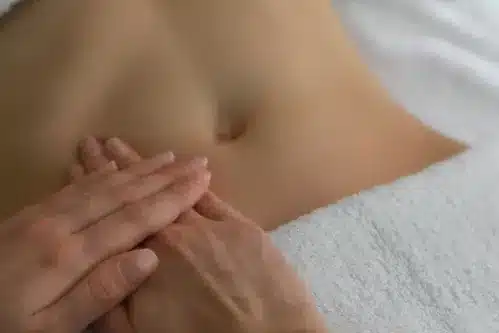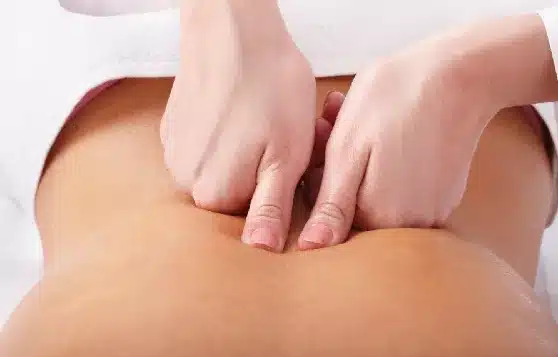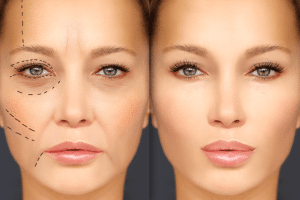Massage after lipomatic surgery plays a crucial role in optimizing post-operative care for individuals undergoing body contouring through surgical fat removal. This therapeutic intervention is essential for promoting recovery and enhancing patient outcomes following lipomatic procedures. Integrating specialized massage into post-operative care regimens contributes significantly to the overall success and comfort of patients undergoing body contouring surgery.
Different Types of Lipomatic
Lipomatic is a modern and advanced technique used in cosmetic surgery to remove unwanted fat deposits from various body areas. Unlike traditional liposuction, Lipomatic utilizes a specialized device that employs ultrasonic energy to liquefy fat cells before gently suctioning them. This technique provides a more efficient and less invasive approach to fat removal, leading to reduced downtime and improved results.
Several types of Lipomatic devices are available, each with unique features and advantages. Some of the commonly used Lipomatic systems include:
- Vaser Lipomatic: This device uses ultrasound technology to target and break down fat cells, allowing for precise and controlled fat removal.
- BodyTite Lipomatic: Combining radiofrequency-assisted lipolysis (RFAL) and Lipomatic, this system promotes skin tightening while removing excess fat.
- MicroAire Lipomatic: This Lipomatic system enhances the surgeon’s precision during the procedure by using reciprocating cannulas.
These variations in Lipomatic technology cater to different patient needs and desired outcomes, providing surgeons with various options.
Importance of Massage After Lipomatic
Massage plays a crucial role in the recovery process following Lipomatic surgery. Here’s why it’s important:
- Improved Circulation: Massage helps stimulate blood flow to the treated area, promoting the delivery of oxygen and nutrients essential for healing.
- Reduction of Swelling: Gentle massage techniques assist in draining excess fluids and reducing post-surgical swelling, enhancing comfort and facilitating a faster recovery.
- Fibrosis Prevention: Regular massage helps prevent the formation of fibrous tissue, which can result in irregular contours and lumpy areas.
- Scar Tissue Management: Massaging the incision sites aids in the softening and fading of scars, leading to improved cosmetic outcomes.
- Relaxation and Stress Relief: Massage promotes relaxation and helps alleviate stress and anxiety associated with the recovery process.

How to Massage After Lipomatic: Step by Step
Performing the appropriate massage techniques after Lipomatic surgery is essential for optimal results. Here’s a step-by-step guide:
Consult with Your Surgeon:
Before starting any massage regimen after Lipomatic, it’s crucial to consult with your surgeon to ensure you’re cleared for massage and to receive personalized guidance based on your recovery progress.
Wait for Healing:
Allow adequate time for initial healing post-Lipomatic, typically a few weeks, before beginning any massage therapy.
Choose the Right Massage Technique:
Opt for gentle, non-aggressive massage techniques that promote lymphatic drainage and reduce swelling.
Prepare for the Massage:
Before starting the massage, ensure you have a clean, comfortable space and clean hands.
Step-by-Step Massage Technique
Here’s a step-by-step guide on how to perform a gentle massage after undergoing Lipomatic or a similar liposuction procedure:
Start with Light Stroking
- Use gentle, light strokes over the treated areas to help stimulate circulation and reduce fluid buildup.
Incorporate Lymphatic Drainage Techniques:
- Gently apply pressure in a circular motion towards the nearest lymph nodes (such as under the arms or in the groin area) to encourage lymphatic drainage.
Use Soft Kneading Movements
- With soft, kneading movements, gently work the fingers over the skin to promote tissue relaxation and reduce tension.
Clinic contact number: +989371200167
Focus on Problem Areas
- Pay special attention to any areas of increased swelling or discomfort, using light pressure to ease tension.
Avoid Deep Tissue Massage
- Avoid deep tissue massage or intense pressure over the treated areas, as this can disrupt healing tissues and cause discomfort.
Massage for a Few Minutes
- Massage each area for a few minutes, gradually increasing duration as tolerated and guided by your comfort level.
End with Light Stroking
- Finish the massage session with gentle, light stroking motions to soothe the skin and promote relaxation.
Tips for Safe Massage After Lipomatic:
- Communicate with Your Massage Therapist: Inform your massage therapist about your recent Lipomatic procedure and any specific areas to avoid or focus on.
- Listen to Your Body: Pay attention to how your body responds during the massage and adjust the pressure or technique accordingly.
- Stay Hydrated: Drink plenty of water before and after the massage to help flush out toxins and aid in the healing process.
-
Patients who undergo massage after Lipomatic surgery often experience reduced discomfort and improved overall well-being.
15 Benefits of Massage After Lipomatic
Regular massage after Lipomatic surgery offers numerous benefits for your recovery and overall well-being. Here are 15 benefits of massage after Lipomatic:
- Accelerated Healing Process: Massage stimulates blood circulation and promotes the delivery of oxygen and nutrients to the treated areas, which aids in the healing process.
- Reduced Post-operative Swelling: Gentle massage techniques help to alleviate swelling by promoting lymphatic drainage and reducing fluid buildup.
- Improved Blood Circulation: Massage enhances blood flow, which assists in removing toxins and waste products, facilitating a more efficient healing response.
- Enhanced Lymphatic Drainage: Massage promotes the movement of lymphatic fluid, reducing the risk of fluid accumulation and promoting a healthier, smoother recovery.
- Softening and Fading of Scars: Regular massage helps to break down scar tissue and improve the appearance of scars, making them softer, flatter, and less noticeable.
- Prevention of Fibrous Tissue Formation: Massage techniques prevent the formation of fibrous tissue, which can lead to lumpy or uneven contours.
- Increased Skin Elasticity: Massage improves skin elasticity by increasing collagen production and promoting the regeneration of healthy skin cells.
- Reduced Discomfort and Pain: Gentle massage can help alleviate post-operative discomfort and pain, promoting a more comfortable recovery experience.
- Relaxation and Stress Relief: Massage induces relaxation, reducing stress and anxiety associated with recovery.
- Improved Overall Well-being: Regular massage after Lipomatic surgery can improve your overall well-being, contributing to a positive mindset and better emotional health.
- Enhanced Contour Definition: Massage helps to distribute remaining fat cells evenly, enhancing the contour definition and improving the aesthetic outcome.
- Balanced Distribution of Remaining Fat Cells: By promoting even distribution, massage prevents the accumulation of fat cells in surrounding untreated areas, maintaining a harmonious overall appearance.
- Faster Resolution of Bruising: Massage helps to improve blood circulation and accelerate the healing of bruised areas, reducing their duration and severity.
- Boosted Self-confidence: The improved aesthetic results and overall comfort achieved through massage after Lipomatic can enhance self-confidence and body image.
- Faster Return to Normal Activities: By promoting a smoother and more efficient recovery process, massage can help you resume your regular activities sooner, with reduced downtime.
Liposuction surgery can be performed under local or general anesthesia, depending on the area and intensity of the procedure Esteaura
Clinic contact number: +989371200167
10 Risks If You Don’t Massage After Lipomatic
Neglecting post-Lipomatic massage can lead to potential risks and suboptimal results:
- Prolonged swelling and edema
- Increased risk of seroma formation (fluid accumulation)
- Fibrous tissue formation and irregular contours
- Prolonged recovery time
- Development of scar tissue
- Persistent discomfort and pain
- Limited range of motion
- Increased risk of infection
- Suboptimal aesthetic outcomes
- Delayed return to normal activities
Age Considerations for Lipomatic
Lipomatic surgery can be performed on individuals of various ages, but it is essential to consider specific factors before proceeding:
- Adult Candidates: Lipomatic is generally suitable for adults with good overall health and realistic expectations regarding the procedure’s outcomes.
- Skin Elasticity: Younger individuals tend to have better skin elasticity, which can contribute to optimal results. However, older individuals can still benefit from Lipomatic surgery with appropriate assessment and expectations.
It is crucial to consult with a qualified surgeon who will evaluate your specific case and provide guidance based on your age, overall health, and desired outcomes.
From Surgery to Recovery with Therapeutic Massage

Conclusion
In summary, the integration of therapeutic massage into the post-operative care plan following lipomatic surgery is essential for optimizing the recovery process after surgical fat removal. Therapeutic massage plays a key role in reducing edema and promoting lymphatic drainage, which are critical aspects of post-operative healing. This specialized form of care contributes to a comprehensive recovery protocol, supporting patients in their rehabilitation journey and enhancing overall outcomes.
As part of the recovery protocol, therapeutic massage after lipomatic surgery not only addresses physical recovery but also contributes to psychological well-being by promoting relaxation and reducing stress. By incorporating this tailored approach into post-operative care, healthcare providers can effectively support patients in their rehabilitation phase and help them achieve the desired body contouring results with enhanced comfort and satisfaction. The importance of therapeutic massage in the context of post-lipomatic care underscores its value in optimizing recovery and supporting patients throughout their surgical fat removal journey.
Clinic contact number: +989371200167
FAQs
- How soon can I start Massage after lipomatic?
- Following your surgeon’s instructions, you can typically massage the treated areas around 48 hours after the procedure.
2. Can I perform the massage techniques myself, or should I seek professional assistance?
You or a professional massage therapist can perform massage techniques. However, it is essential to consult your surgeon to ensure you are using the correct techniques and to obtain personalized guidance.
3. How long should each massage session last?
Start with shorter sessions and gradually increase the duration as tolerated by your body. Consult your surgeon for specific recommendations based on your case.
4. Are there any restrictions or precautions for massages after Lipomatic?
Yes, it’s important to avoid deep tissue or aggressive massages that could disrupt healing tissues or cause discomfort. Always communicate with your massage therapist about your recent procedure and any specific areas to avoid.
5. How can massages help with recovery after Lipomatic?
Massages can aid in reducing post-operative swelling, improving circulation, and promoting lymphatic drainage. This can contribute to a smoother recovery process and enhance overall results.
Turkey Edema After Liposuction – Este Aura




